Fungi on legs and fingers is a problem that bothers many people.Itching, burning and ugly skin and nails are just a small part of it.The disease is dangerous and the complications are even more difficult to cure.However, if you seriously treat fungal infections (mycosis), you can solve the problem.
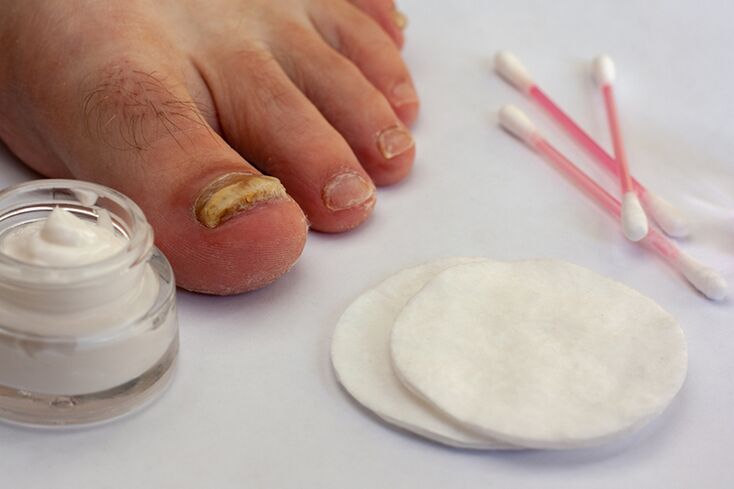
Why do fungi appear on the feet?
Fungi are one of the types of infectious agents that affect the skin.These are difficult and extremely tenacious microorganisms.Therefore, fungal diseases require a serious and comprehensive treatment.
Fungi have their favorite habitat on the skin.First, it is the skin of the toes and nails.The reason for this is understandable - the feet are usually inside the shoes, where a lot of moisture and dirt build up, and it's very hot.Therefore, fungi that live on the feet have a lot of food and favorable microclimate transmission.Certain types of complex fungi often affect the skin and other types of mushrooms, such as yeast and mold, preferring the nail plate.Maybe several types of fungi are infected at the same time.
Contributing to the development of fungi on the fingers:
- Local and general immunity reduction;
- Poor feet hygiene;
- inconvenient and narrow shoes;
- irregular changes in socks or stockings;
- stocking of synthetic materials that don’t pass through the air;
- Regularly hypothermia or overheating of feet;
- Leg circulation disease;
- Varicocele;
- Chronic diseases of the cardiovascular system, diabetes;
- The long treatment process of antibiotics;
- Increase sweating in the legs;
- The body lacks vitamins and mineral elements;
- Mechanical damage to skin, corn, foot trauma;
- Too much weight on the legs;
- Irregular hairstyles for nails on legs.
The most important of these factors is the reduced immunity and blood circulation in the legs.For different reasons, immunity may be reduced.Usually these are serious chronic diseases, mainly infectious diseases.Similarly, by taking immunosuppressants through cancer, immunity may decrease immunosuppressants.The behavior of blood circulation on the legs and fingers is equally important for blood vessels, blood, diabetes, and smoking.
Stop mycoses can develop in men and women.They occur more frequently in adults than in children.
Certain types of fungi often live on the skin and are activated only in adverse circumstances, such as those of the genus Candida.and other species spread from human to one person.If a person does not use personal shoes, an infection may occur while going to the gym, bathing, or showering.In addition, people who wear other people's shoes or socks, or allow others to use them, suffer a significant risk of infection.Usually, infection occurs when the same towels, manicure supplies, etc. are used.Factors that increase the likelihood of infection are cut on the skin surface and deforming the nail plate.
Symptoms of fingers
The main symptoms of sole disease are itching and burning.Redness, small bubbles, increased skin peeling and deterioration of the skin, an unpleasant odor can also be observed.The first symptoms of skin mycotic disease may be confused with simple irritation and gratitude.
Symptoms of tumor disease
Fungi affect not only the skin, but also the nails.The final mycomycosis is called tumor disease.The main symptom of myomycosis is the change in the structure and type of nails, and its brittleness increases.The nails turn yellow, furrows and cracks appear on their surfaces, and the nail plates become thicker and deformed.If you don't treat the treatment, your nails will gradually peel off and collapse from the nail bed.
What does the fungus look like on your fingers: Photos
You should not diagnose yourself through photos.This diagnosis should be made by a qualified dermatologist.

Only he can determine the type of fungus.To do this, he may need not only an external inspection of his feet, but also a lab test of skin scratches.
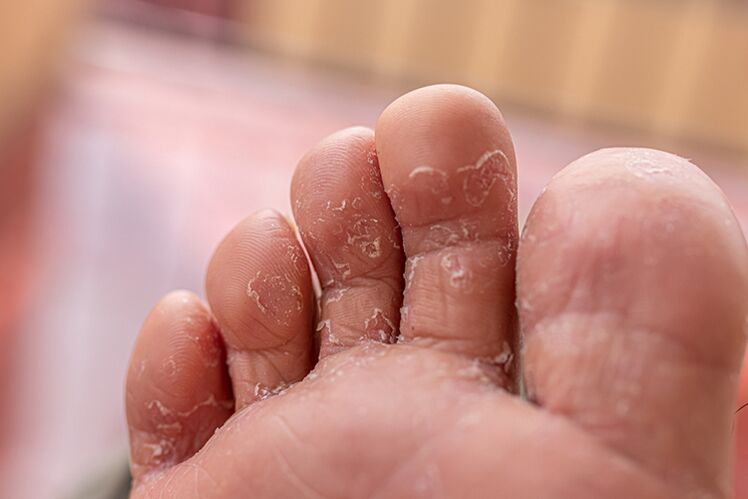
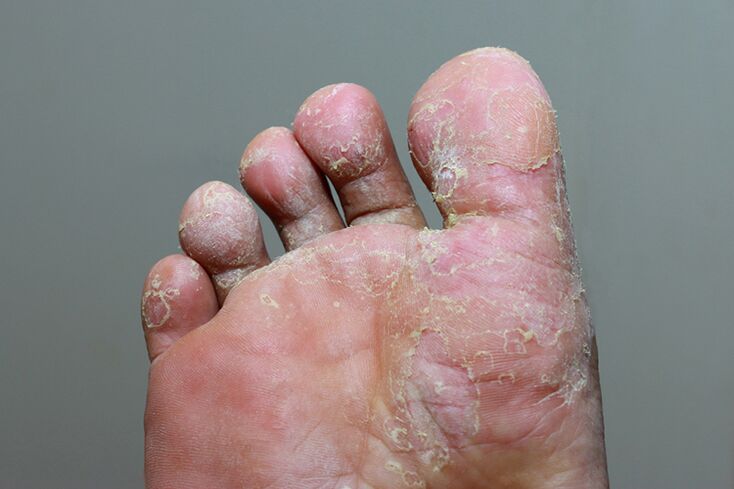
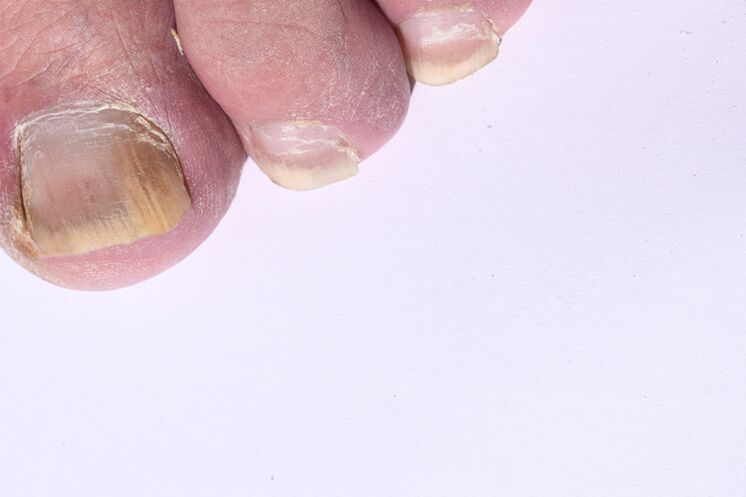

But the presence of signs, at least similar to the ones depicted in the photo, is a worrying occasion and a doctor visit.
The treatment of the disease is comprehensive and is performed at home under the supervision of a doctor.
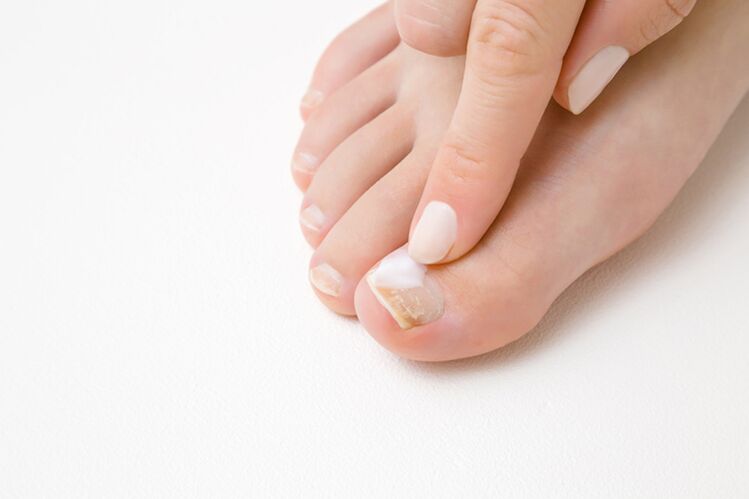
Fungus on the little finger
Fungus affects the skin of the feet and fingers.But the little fingers on the legs are most susceptible to infection.Little fingers in tight shoes are often compressed, and blood circulation is disturbed due to wear on the skin.Due to damage to the little finger, the disease develops very quickly, faster than any other nail.When infected with a little finger, the infection will quickly touch other fingers.
The fungus on the little finger is treated the same way as the fungus in other areas of the skin.The most reasonable output of octopus disease through the little finger is to remove its nail plate.This surgery will not cause too much inconvenience to the patient, as the nails on the little fingers grow rapidly.However, while the nails do not grow anymore (this may take 3-4 months), it is necessary to use antifungal drugs to prevent reinfection.
How to treat fungi on your fingers?
Treatment for the outcome should begin with shocking symptoms for the first time.First, you need to contact a dermatologist for diagnosis.Before starting treatment, it is necessary to determine the presence of mycomycosis and the type of pathogenic microorganisms.To do this, the doctor will scratch or cut a piece of nail from the skin (damages to the nails).Blood test, sugar in blood.The mucosa of the foot skin must be with:
- Other infectious skin diseases;
- Allergic reactions;
- Skin diseases caused by diabetes, vascular diseases, stress and neurological diseases.
To treat mold on the legs, local products (sprays, ointments, creams) are most commonly used.Only in severe cases can doctors prescribe anti-magic pills.Typically, fluconazole, itraconazole, terbifenfen are used.
Treatment is based on the use of antibacterial pilates.This type of medicine contains substances that kill mushrooms (fungicide) or stop reproduction (fungist).
What antibacterial agents are most commonly used:
- Cloone,
- Ketokonazole,
- Tebinafin,
- Nistatin,
- Mikonazole,
- environment,
- Fluconazole.
Topical drugs with antibacterial, anti-inflammatory and angular chemical properties were also used.If suppurative occurs, an antibacterial agent should be prescribed, i.e. bacteria adhere to the fungal infection.Anti-inflammatory drugs can handle unpleasant symptoms well - itching and burning.However, they do not affect the cause of the disease - pathogenic microorganisms.Keratinizers include zinc, sulfur and sulfuric acid ointments.They accelerate the regeneration of skin tissue due to the accelerated exfoliation of the dead epidermis.
To treat the stop of mycotic diseases, an antibacterial bath is also used - iodine, iodine, salt, diet soda, and boric acid solution.Bathing is best done 20 minutes before bedtime.To prevent spores from infecting spores, you need to treat healthy areas of the skin with chlorhexidine, iodine, hydrogen peroxide, potassium permanganate.For Thechomicosis therapy, varnishes with antibacterial substances are used - Looceril, Exoderil, batrophen.These varnishes must be applied to the nail plate.
Glues and creams must be used to pre-pre-wash and cleanse the skin and the frequency indicated in the product description.The application area of the ointment should be slightly larger than the visible damage area.To apply nails to the nail plate, the nails must be steamed, the uneven edges must be polished with documents, and the surface of the nails must be lowered with an alcoholic solution.
In folk medicine, decoctions of medicinal plants are used to remove mycotic diseases on the legs - chamomile, wire, sage, St. John's wort, mint, vinegar, onion, onion and lemon juice.
What if the fungus doesn't pass through the fingers?
The treatment of the outcome is a long and difficult process.Fungal microorganisms are very tenacious and it is impossible to get rid of them in a few days.Sometimes it takes months of careful treatment.At the same time, it is impossible to interrupt one day.Treatment of tumor diseases cannot be completed until new, healthy nail plates grow.
It is also important to consider other factors related to disease development.Failure to adhere to skin hygiene and optimal temperature conditions for the feet can reduce all treatment efforts to zero.This means it is necessary to wash the surface of the foot skin regularly to avoid overheating or hypothermia.Avoid mechanical damage to the skin, excessive load on the feet, cutting and injury are also important.Excess weight can increase stress on your feet, so if you suffer from fullness, you should consider losing weight.
If the patient keeps wearing shoes infected by fungi, then there is no powerful drug here, as the location of the dead microorganisms will immediately occupy the new ones.Therefore, it is necessary to get rid of all the factors that help reinfection.You can't go to other people's shoes or socks.The socks must be thoroughly washed and replaced regularly.The inner surface of the shoe should be thoroughly sprayed with anti-erosion agent.
With the help of stubborn mycotic diseases, it is necessary to analyze general health conditions.Perhaps this will help determine the causes of impaired leg immunity and blood circulation.Therefore, a complete examination can be performed and problems with the heart, blood, blood vessels and organs of the endocrine system can be ruled out.
Finally, the microorganism may simply develop resistance to the anti-worm agents used.Then, it is necessary to change the medication.Maybe systemic anti-potency drugs in tablets are needed.The dosage of the drug should be chosen by the dermatologist.
























